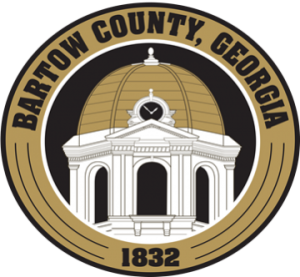Question: Why are the branches on my Leyland cypress trees dying back?
Over the last decade or so Leyland cypress became extremely popular as screening plants. They provided homeowners with a cheap, very rapidly growing privacy screen. Unfortunately, when a plant becomes so popular that it is planted everywhere, formerly minor pest problems can develop into major problems. Problems with established trees began cropping up several years ago, and the incidence of damage from disease and insect pests has increased every year. Canker diseases, dieback and needle blight are becoming increasingly common on Leylands as are infestations of bagworms and spider mites. Drought stress in recent years has also played a role in increasing Leyland’s susceptibility to these problems. Because of the mature size of the trees (70-100’ tall by 20’ wide), treatment is difficult or impossible for most homeowners. Canker diseases that infect the main trunk are lethal and fungicides provide no control once an infection has taken place.
Other problems occur simply because Leyland cypress are often seen as the “one solution” for all screening needs and are planted in situations inappropriate for them. Planting in poorly drained or wet soils, or where excessive overwatering occurs often leads to fungal root rots. Leyland cypress requires full sun to grow well, and when planted in shade, rapidly thins and sheds lower branches. The desire for instant screening often leads to trees being planted too closely, which results in overcrowding at maturity. Overcrowding leads to problems with poor air circulation, increasing the possibility of disease occurrence and shading out of lower branches.
Because of all these problems, it is necessary to consider substitutes (not just a single substitute) for Leyland cypress in the landscape. The idea is to choose plants for a particular site based upon cultural conditions and aesthetic considerations. It is best to have diversity in the landscape. The use of a variety of well-adapted species, whose requirements match the site conditions, results in healthier plants and fewer problems in the long term.
For those who desire a tall, narrow conifer similar in form to Leyland cypress, consider Arizona cypress for dry sites in full sun or ‘Green Giant’ arborvitae for moist, but well drained, fertile sites in full sun. Japanese cedar (Cryptomeria) makes a fine tall screen in partly shady areas. Many broadleaved evergreens make excellent dense screens and also provide flowers or berries for seasonal interest. These might include trees such as Southern Magnolia, various holly varieties, and tea olive. In many cases, screens that range between 6 and 15 feet tall will be sufficient to provide privacy. For example, wax myrtle is excellent for many difficult sites in full sun. There are viburnums available for virtually any situation, and they will add to the landscape with flowers and berries. Cleyera, tall forms of loropetalums, camellias, shorter tea olives and many other species should be considered when looking for appropriate screening for a site.
It is important not to search for only one plant as a Leyland cypress substitute. Overuse of any single plant species or cultivar would likely lead to a repeat of the problems that is now striking Leyland cypress. Mixed-species screens help prevent the spread of problems from one plant to the next. An advantage of several rows of staggered plants is that they can be spaced more widely, allowing for better air circulation, while still achieving a full screen. Good air circulation helps reduce the incidence of disease problems. In a mixed screen, even if one species does develop problems, the entire planting will not be sacrificed. Mixed screens can also be far more interesting and rewarding throughout the seasons, offering the chance to turn a utilitarian screen into a beautiful part of the entire landscape.
Paul Pugliese is the Extension Coordinator and Agriculture & Natural Resources Agent for Bartow County Cooperative Extension, a partnership of The University of Georgia, The U.S. Department of Agriculture, and Bartow County. (770) 387-5142. For more information and free farm, lawn, or garden publications, visit our local website at www.caes.uga.edu/extension/bartow .
